No products in the cart.
Return To Shop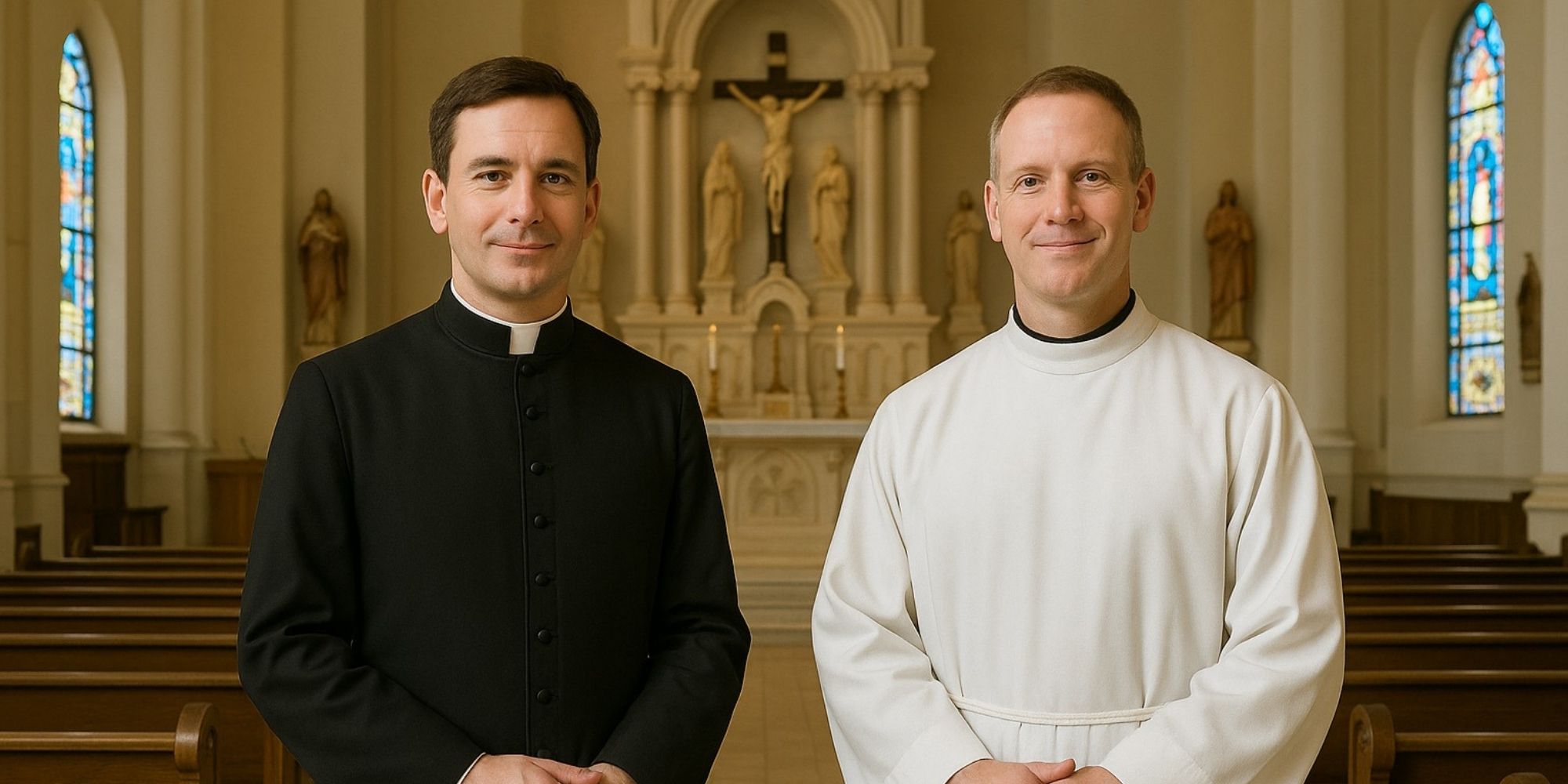
The Significance of Clergy Wear and Clergy Robes in Ministry
Clergy members are easily recognized by their distinctive attire. Clergy wear and clerical robes are represent dedication, authority, and service. From priests and pastors to deacons and ministers, these garments symbolize a life devoted to faith and ministry. Wearing the right attire ensures that clergy members are identifiable while upholding the traditions of the church. In this blog, we explore the history, significance, and purpose of clergy wear, and how Holy Clergy provides high-quality options for today’s ministers.
What Is Clergy Wear?
Clergy wear refers to the specialized clothing that ministers, priests, pastors, and other church leaders wear to signify their calling. These garments distinguish clergy from the laity and help maintain a sacred atmosphere during worship and other church services. Typical clergy attire includes clerical robes, cassocks, stoles, albs, and specialized shirts for daily ministry. Clergy wear is not meant for fashion; it is a symbol of devotion, authority, and humility that visually communicates the wearer’s spiritual role.
Biblical Perspectives on Clergy Attire
The Bible guides on the importance of priestly garments. In Exodus 28:2, God instructs Moses to make garments “for glory and for beauty” for priests, highlighting the sacredness of attire. Leviticus 8 provides detailed instructions on priestly clothing, reinforcing the idea that garments identify spiritual leaders and their responsibilities. Modern clergy wear, including clerical robes and collars, continues this tradition, reminding ministers of their humility, service, and devotion to God and their community.
The Purpose of Clergy Wear
The purpose of clergy wear goes beyond aesthetics. It carries spiritual, symbolic, and practical significance. Every garment worn by clergy communicates humility, reminding leaders that ministry is about serving others, not personal recognition. At the same time, it signifies authority, letting people know that the wearer is entrusted with spiritual leadership. Clergy attire also helps create a sacred environment, ensuring that congregants focus on worship rather than personal appearances.
Who Wears Clergy Wear?
Clergy wear is not limited to priests. Many individuals across various Christian denominations don these garments to signify their ministry. Priests, pastors, deacons, bishops, ministers, and chaplains all wear clergy attire in some form. Men and women alike wear these garments today, with designs adapted to suit both genders. Male clergy may wear cassocks or tailored clergy shirts, while female clergy often choose clergy dresses, blouses, or pastor shirts designed to accommodate collars. This inclusivity emphasizes that ministry authority comes from calling, not gender.
Historical Evolution of Clergy Wear
The history of clergy wear is rich and evolving. Early clergy dressed similarly to ordinary citizens, wearing dark suits or simple robes. In the 19th century, Scottish minister Rev. Donald McLeod introduced the white clergy collar, which soon spread across Europe and the Christian world. Over time, clerical robes and other garments became more standardized, with distinct styles, colors, and fabrics indicating rank, denomination, and liturgical purpose. Modern clergy attire now balances tradition with practicality, offering options like detachable collars, tailored clergy shirts, and female clergy robes.
How Clergy Robes Shape Tradition
Clerical robes play a central role in maintaining liturgical and ministerial traditions. They visually connect clergy with centuries of religious practice while emphasizing their role in sacred ceremonies. Variations in robe styles exist across denominations: Catholic and Orthodox robes are often elaborate, while Protestant robes may be simpler. For women clergy, modern designs maintain modesty and tradition while providing comfort. By wearing robes, clergy uphold ritual continuity, visual authority, and spiritual symbolism in their ministry.
Modern suppliers, including Holy Clergy, provide stylish and functional options for both genders while preserving tradition.
Modern Trends in Clergy Wear
Over the past few decades, clergy fashion trends have evolved to meet modern needs. Male clergy now wear practical clergy shirts, pastor shirts, and detachable collars, making daily ministry easier. Female clergy enjoy a variety of options, including preaching dresses for ladies, female minister outfits, and clergy blouses for women, combining modesty, comfort, and style. Even traditional garments like cassocks and albs are now available in lighter fabrics suitable for year-round use. These trends ensure that clergy can maintain professionalism while meeting practical demands of ministry
Differences Between Clerical Robes Across Denominations
Not all clergy robes are the same. Each Christian tradition has unique styles and symbols. Catholic and Orthodox robes often feature elaborate embroidery, multiple layers, and specific colors for liturgical seasons. Protestant robes may be simpler, often paired with stoles or collars to indicate ministry rank. Female clergy robes are adapted to ensure comfort and mobility while preserving the dignity of traditional clerical attire. Understanding these differences helps clergy select garments appropriate for their denomination and ministry role.
The Importance of Color in Clergy Robes
Colors in clerical robes are not merely decorative; they carry meaning. White represents purity and holiness, often seen in albs or collars. Black symbolizes humility, sacrifice, and dedication to Christ. Purple is used during penitential seasons such as Lent, while green signifies growth and ordinary time in the church calendar. Choosing the right color for robes and stoles ensures that clergy visually communicate their spiritual role and align with liturgical traditions.
Clergy Attire for Special Ceremonies
Certain events in ministry require formal clergy wear. Baptisms, weddings, funerals, ordinations, and church celebrations often call for ceremonial robes, stoles, and collars. Clergy must choose attire that reflects the solemnity of the occasion while respecting tradition. Formal robes, cassocks, and clergy suits, paired with stoles or colored accents, enhance the sacredness of these ceremonies and provide congregants with visual cues of the clergy’s role.
How to Maintain Your Clergy Wear
Proper maintenance ensures longevity and professional appearance. Clerical robes, collars, and pastor shirts should be washed according to fabric guidelines. Detachable collars allow easier cleaning and replacement. Store garments in a clean, dry environment to prevent wrinkles or fabric damage. Regular maintenance ensures that clergy wear remains crisp, dignified, and ready for both daily ministry and special ceremonies.
Accessories and Add-Ons for Clergy Wear
Accessories complete the clergy look. Stoles, crosses, collar buttons, and detachable collars enhance functionality and visual appeal. Stoles often indicate rank or liturgical season, while detachable pastor collars provide convenience. Accessories also allow clergy to adapt attire for formal services, casual ministry, or specific ceremonial duties, ensuring they can focus on spiritual leadership without compromising tradition.
Why Choose Holy Clergy Wear Today
For clergy members seeking high-quality, traditional yet comfortable attire, Holy Clergy provides the perfect solution. We offer Roman collars, tab collars, detachable collars, tailored clergy shirts, and female clergy dresses, designed for both daily ministry and formal occasions. Our products combine tradition, comfort, and modern practicality, ensuring that ministers can serve effectively while wearing attire that reflects dignity, authority, and devotion.
Conclusion
Clergy wear and clerical robes are essential to ministry, symbolizing humility, service, spiritual authority, and tradition. From early 19th-century collars to modern adaptations for both men and women, clergy attire continues to play a vital role in spiritual leadership. Choosing the right attire, such as garments offered by Holy Clergy, ensures comfort, respect for tradition, and recognition of a clergy member’s calling. Whether wearing a Roman collar, tab collar, or a tailored clergy robe, each piece is a visible reminder of dedication to faith and service.
Frequently Asked Questions (FAQs)
What does clergy mean?
Clergy refers to ordained leaders of the church, including priests, pastors, ministers, deacons, and bishops. These individuals are called to lead, teach, and serve the congregation, often wearing distinct attire to reflect their sacred role.
What does a clergy wear?
Clergy typically wear clerical robes, cassocks, albs, stoles, collars, and tailored clergy shirts or dresses. Male and female clergy may choose different styles, but the symbolism of service and spiritual authority remains the same.
Should clergy wear robes?
Yes, clergy should wear robes as part of their spiritual attire. Robes symbolize humility, service, and authority, helping congregants identify ministers during worship, ceremonies, and daily ministry.
What is the history of clergy robes?
Clergy robes evolved from ordinary clothing worn by ministers. The 19th-century introduction of the white clergy collar by Rev. Donald McLeod in Scotland marked the beginning of standardized clergy attire. Over time, robes became symbolic of service, authority, and tradition across Christian denominations.
Can clergy robes be customized?
Yes, many suppliers, including Holy Clergy, provide tailored robes and collars to fit specific needs, sizes, and preferences, ensuring both comfort and adherence to tradition.


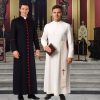
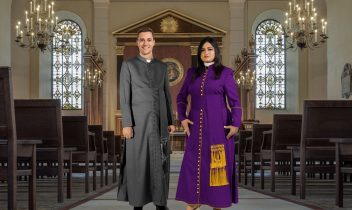
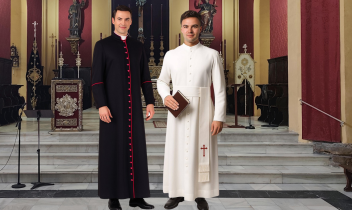
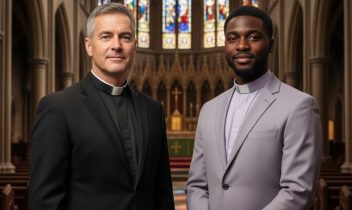
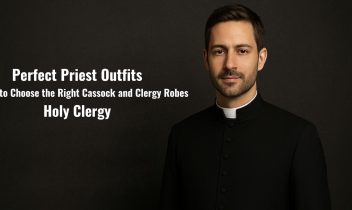
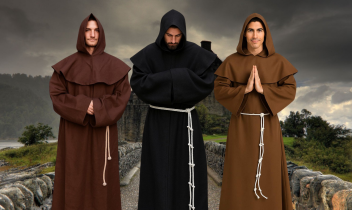
Recent Comments